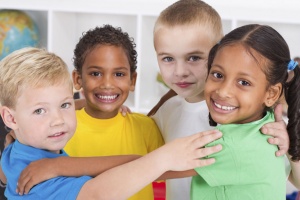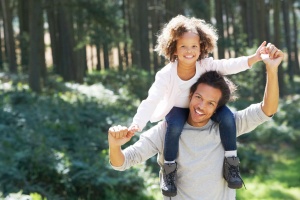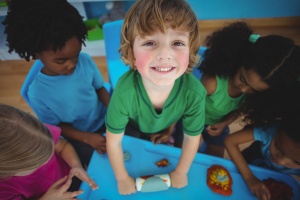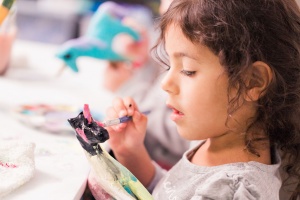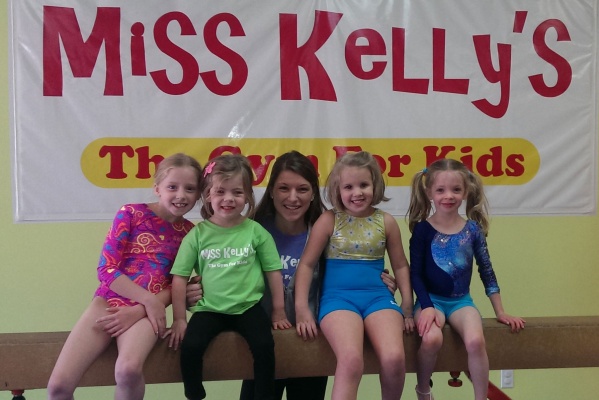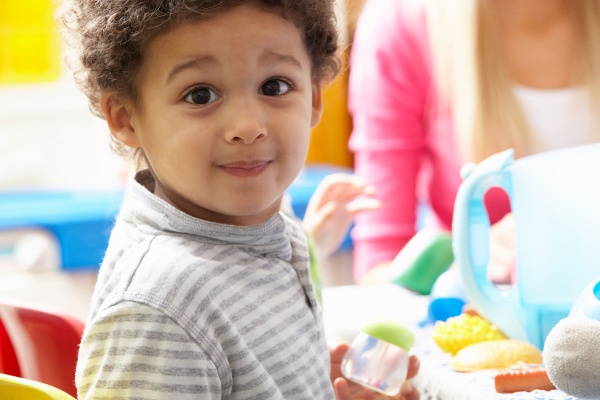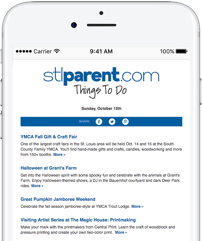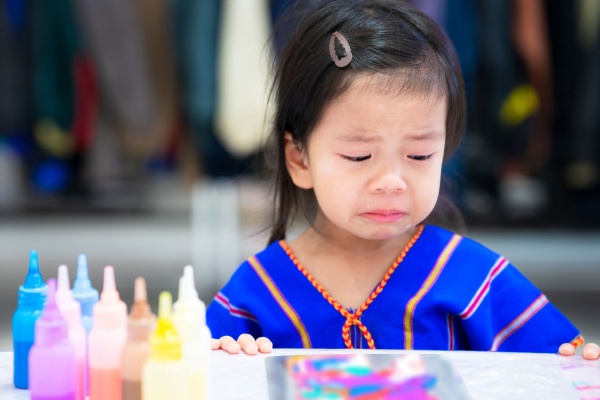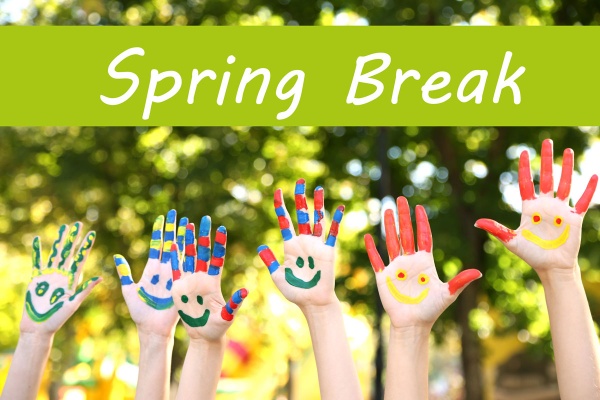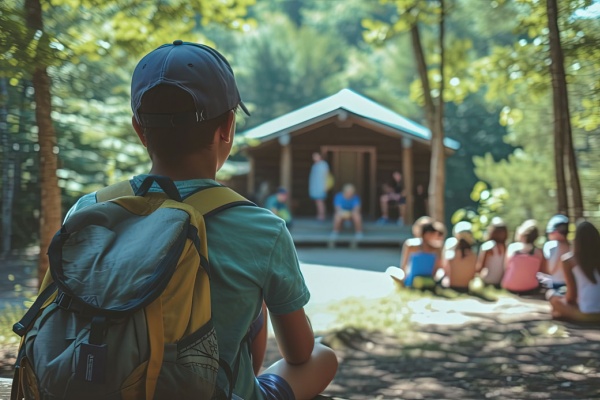
St. Louis Moms Open Up About Open Adoption
In the months leading up to their little one’s arrival, 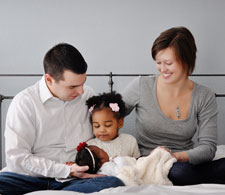 expectant parents are overwhelmed with questions from the miniscule to the monumental.
expectant parents are overwhelmed with questions from the miniscule to the monumental.
For parents considering adoption, their questions can be incredibly complex, especially when making the choice to pursue open adoption.
Because open adoption allows for an ongoing relationship between the birth family and adoptive family, parents not surprisingly have a variety of concerns – Will open adoption cause confusion for my child? How involved should her birth parents be in her life? What’s the best way to respond to inappropriate questions about my son?
One of the greatest resources parents have in the adoption process is one another. To provide some insights on what adoptive moms and dads might expect, two parents – Rachel Garlinghouse of Edwardsville, mother to Ella and Emery, and Leanne Brown of Maryland Heights who welcomed son Mason to her family this May – have agreed to share their adoption experiences, shine a light on open adoption misconceptions, and steer parents to some great support services right here in St. Louis.
Open adoption has become increasingly common over the past few years. Why do you think it has become the norm and why was it right for your family?
Garlinghouse: There's a book called "The Girls Who Went Away" by Ann Fessler, where the author interviews multiple women who placed kids for adoption in the 1950s and 1960s. In most cases, the women weren't allowed to see their babies after the birth, name their babies, or know who would adopt their children. As a result, as one can imagine, the women are forever haunted by the loss of their children. Open adoption is quite the opposite of what used to be the norm, because the old norm (closed adoption) was generally unhealthy for the biological mothers and the children they placed for adoption.
When we started our adoption journey, we were allowed to choose what type of adoption we would be open to: closed, semi-open, or open. Initially, we chose semi-open, but after reading many adoption books and talking to adoptive families and birth mothers, we decided that open adoption was the best choice for our family.
We felt this way because we knew that one, we, as the adoptive parents, couldn't provide all the answers our child would eventually want. Two, we wanted our child to be able to maintain biological connections, as we know from research that biology is important to many adoptees. And finally, we had to recognize that a child we adopted isn't just ours. Our children belong to two families, just in different ways!
Brown: We assumed, based on statistics, that we would have a semi-open adoption (all correspondence would be through the agency with no identifying information revealed). When we were introduced to our birth mother and learned that she wanted an open relationship, we were a little apprehensive. Would she show up on our doorstep some day? What would our obligations be? Once we met and got to know her, we fell in love with her. She is the little sister that I never had, and we feel very protective of her. She will always be a part of our lives, and there is comfort knowing that she is only a phone call away if we have questions about our son's health history.
Can you provide a little background on your family's adoption experiences?
Garlinghouse: We started our first adoption journey in 2007. The previous year, I was diagnosed with type I diabetes, a disease that has no cure and can make pregnancy dangerous for both the mother and the unborn child. After 14 months of waiting, we got "the call" (THE CALL!) for an African American baby girl who was already born. We became Ella's parents when she was five days old.
This past summer, Steve and I decided to begin our second adoption process, knowing that we could be waiting for quite some time. We got "the call" for our second daughter, Emery, on the DAY we started waiting. You can imagine our surprise! Emery was two weeks old when she became our daughter; she is also African American.
Both of our adoptions are transracial (meaning our family is made up of multiple races) and fully open.

In April we received a call from Colleen that we had been matched with a birth mother in California who was due in mid-May. We immediately contacted the adoption lawyer and made plans to speak on the phone with our birth mother. Two weeks later we were on a plane headed to California to meet our son, Mason James.
What are your relationships now with the birth parents?
Garlinghouse: We see Ella and Emery's birth families about three times a year. We send them pictures and letters bi-monthly, and we also communicate often through text messaging. Ella knows the names of her birth family members. At two and a half, she tells people, "Hi, I'm Ella and I'm adopted!" She also says, "I'm brown" and tells me, "Mommy is pink."
Emery is only seven months old, but she has already had two visits with her birth parents and siblings.
What we love about open adoption is the availability of a relationship and information. For example, I took Emery to the eye doctor and had a question about family history while filling out some paperwork before the exam. All I had to do was text her birth parents and ask!
Many people ask, isn't it confusing for a child to have two sets of parents? The answer is no. The girls will grow to understand that each of us (her biological parents and us, her adoptive parents) play different roles in their lives, but are both very special. Secondly, think how many children have unique family situations – step-parents, single parents, perhaps being raised by a different family member such as a grandmother. Unique families are the norm! Finally, we, as the adoptive (legal) parents, do everything for our children that any other mom or dad does. Our girls know we are mommy and daddy.
Brown: Before Mason was born we talked on the phone and sent text messages daily, actually hourly. She had so many questions and we wanted to get to know as much as we could about her and her family. Now that we are home we hear from her on milestone days like when he turned one month old, father's day and on the day she graduated from high school. We order photos for her and have them printed at her local drugstore for her to pick up at her convenience.
Every parent has his/her own set of challenges. As a parent who has adopted, what are the biggest challenges you face? Rachel, since you adopted transracially, are there any issues particular to your family?
Garlinghouse: The biggest challenge we face so far is other people asking hurtful questions or making assumptions about our family. Ella is almost three years old. When a stranger approaches us and asks, "Why didn't her birth mother want her?", I want to melt into the floor because I know Ella was listening to the conversation.
We've been asked questions about the girls' birth parents (their age, their situation, why they didn't parent, etc.). We're asked why we didn't want "our own" kids, why we "had" to adopt, and why we would choose to adopt outside our race. The most hurtful question we've encountered lately, now having two children, is, "Are they REAL sisters?" As we become more experienced and confident as an adoptive family, we've learned how to handle the questions in a way that doesn't embarass our children while also protecting their privacy.
What advice would you have for a parent considering open adoption?
Garlinghouse: My advice on anything adoption related is to get educated! Education is empowering. I have a list of resources on my blog for people considering adoption at whitesugarbrownsugar.blogspot.com/p/resources.html.
Brown: I agree with Rachel – become educated and join a support group to get advice from others who have open adoptions. Don't assume that an open adoption means you need to invite your birth mother over for Sunday dinners at your house. Our birth mother wanted an open adoption so she could keep track of Mason and know what he is doing in his life. She told us that she just wanted the peace of mind of knowing that he's happy and healthy.
You both are actively involved in adoption support groups. What do your particular groups offer and how can someone get involved?
Garlinghouse: I facilitate a group called Adoptive Mamas of the Metro. We meet once a month in Edwardsville. Women who have adopted, are waiting to adopt, or are considering adoption are welcome to join the group.
Our group consists of women who have adopted internationally, domestically, and through foster care. Some of the moms have biological and adopted children, children with special needs, children of other races, and older children. The beauty of our group is its diversity and warmth. Anyone interested in attending a meeting can contact me at supagurlrae@hotmail.com or via my blog, White Sugar, Brown Sugar.
Brown: I belong to a wonderful support group called IAS (Infertility and Adoption Support, Inc.). IAS is a local member-run group that provides support and information to people experiencing infertility and or those considering or going through the adoption process. We have regular meetings for adoption support, women's infertility support and couples support. For more information you can check out the IAS website and view the meeting calendar or contact IAS at general@infertilityandadoption.org.
By Nicole Plegge, Lifestyle Blogger for SmartParenting
Garlinghouse photo credit: Jill Heupel Photography

Metro East mom Nicole Plegge has written for STL Parent for more than 12 years. Besides working as a freelance writer & public relations specialist, and raising two daughters and a husband, Nicole's greatest achievements are finding her misplaced car keys each day and managing to leave the house in a stain-free shirt. Her biggest regret is never being accepted to the Eastland School for Girls. Follow Nicole on Twitter @STLWriterinIL

